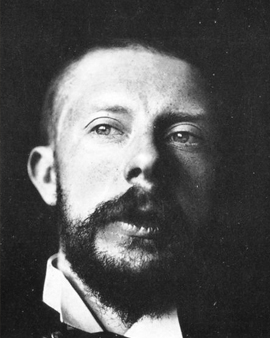The Dutch artist George Hendrik Breitner was undoubtedly a genius, which reflects his expression of late Impressionism in his paintings, but as a person he was rather a difficult contemporary. It is little known that he, who lived from 1857 to 1923, was friends with Vincent van Gogh in the years after 1882. After dropping out of school and taking private lessons with the Rotterdam genre painter Christoffel Neurdenberg, Breitner studied at the Royal Academy of Art in The Hague. Here he also came into contact with representatives of the Hague School, an artists' association of the time. The private contact with these artists, especially with Jacob Maris, fascinated him more than his academic training. Autodidactically he developed his own style.
Breitner was often present at the Hague State Riding School, where he painted horse studies. Since he expanded his repertoire in this respect, he made a name for himself with this own style. This also led to commissions, for example from his painter colleague Willem Mesdag, a naval and genre painter who also belongs to the Hague School. This is also how the well-known 1.40 x 3.40 m large-format cavalry painting on the beach of Scheveningen was created. He was also associated with van Gogh in a joint project in which they chose The Hague Workers and Maids as subjects.
Breitner was not necessarily interested in "bright", radiant Impressionism, but his style became more representational and, as he said about himself, "truer". This sometimes led to breaks, so that the pictures became darker and more uncompromising. With the often painted street scenes in Amsterdam, it was not the beautiful sides of the city that interested him. He was drawn to the poorer parts of the city, where real life took place for him. So pictures of dock workers, craftsmen, housewives are more likely to be found than elegantly dressed city dwellers. Also his most famous painting 'Singelbrücke bei der Paleisstraat in Amsterdam' shows a rather dull winter scene at a canal bridge. The persons are painted with fast brush strokes, mostly also darkly dressed. The impression is created as if the persons are moving through the picture almost hastily. In Breitner's work, one sees transitions to Expressionism rather than his initially bright, still Impressionist-influenced style of the initial study paintings. In the years around 1898, Breitner found in the incipient black-and-white photography an excellent tool for capturing his studies of movement and light in photographs and then implementing them accordingly in his paintings. His photographs are much sought-after today, having been rediscovered only in 1962.
×





.jpg)
.jpg)
.jpg)
.jpg)
.jpg)
.jpg)
.jpg)
.jpg)
.jpg)
.jpg)
.jpg)
.jpg)
.jpg)
.jpg)
.jpg)
.jpg)
.jpg)
.jpg)
.jpg)
.jpg)
.jpg)
.jpg)
.jpg)
.jpg)
.jpg)
.jpg)
.jpg)
.jpg)
_-_(MeisterDrucke-88367).jpg)
_-_(MeisterDrucke-88367).jpg)
_Jordan_(1866-1948)_The_Artists_Wife_-_(MeisterDrucke-1395083).jpg)
_Jordan_(1866-1948)_The_Artists_Wife_-_(MeisterDrucke-1395083).jpg)
.jpg)
.jpg)
.jpg)
.jpg)
.jpg)
.jpg)
.jpg)
.jpg)
.jpg)
.jpg)
.jpg)
.jpg)
.jpg)
.jpg)
.jpg)
.jpg)
.jpg)
.jpg)
_-_Drie_vrouwen_op_een_brug_in_regen_en_wind_-_(MeisterDrucke-1379130).jpg)
_-_Drie_vrouwen_op_een_brug_in_regen_en_wind_-_(MeisterDrucke-1379130).jpg)
.jpg)
.jpg)
.jpg)
.jpg)
.jpg)
.jpg)
.jpg)
.jpg)
.jpg)
.jpg)
.jpg)
.jpg)
.jpg)
.jpg)
.jpg)
.jpg)
.jpg)
.jpg)
.jpg)
.jpg)
.jpg)
.jpg)
_-_Drie_vrouwen_op_een_brug_in_wind_en_regen_-_(MeisterDrucke-1380518).jpg)
_-_Drie_vrouwen_op_een_brug_in_wind_en_regen_-_(MeisterDrucke-1380518).jpg)
.jpg)
.jpg)
.jpg)
.jpg)
_the_Painters_Half-sister_-_(MeisterDrucke-1394592).jpg)
_the_Painters_Half-sister_-_(MeisterDrucke-1394592).jpg)
.jpg)
.jpg)
.jpg)
.jpg)
.jpg)
.jpg)
.jpg)
.jpg)
.jpg)
.jpg)
.jpg)
.jpg)
.jpg)
.jpg)
.jpg)
.jpg)
_-_(MeisterDrucke-1395663).jpg)
_-_(MeisterDrucke-1395663).jpg)
.jpg)
.jpg)
.jpg)
.jpg)
.jpg)
.jpg)
.jpg)
.jpg)
.jpg)
.jpg)
.jpg)
.jpg)
.jpg)
.jpg)
.jpg)
.jpg)
.jpg)
.jpg)
.jpg)
.jpg)
.jpg)
.jpg)
.jpg)
.jpg)
_-_Lauriergracht_-_(MeisterDrucke-1381671).jpg)
_-_Lauriergracht_-_(MeisterDrucke-1381671).jpg)
.jpg)
.jpg)
.jpg)
.jpg)
.jpg)
.jpg)
.jpg)
.jpg)
.jpg)
.jpg)
.jpg)
.jpg)
.jpg)
.jpg)
.jpg)
.jpg)
.jpg)
.jpg)
.jpg)
.jpg)
_-_Plein_bij_avond_-_(MeisterDrucke-1331070).jpg)
_-_Plein_bij_avond_-_(MeisterDrucke-1331070).jpg)
.jpg)
.jpg)
.jpg)
.jpg)
_-_(MeisterDrucke-1393631).jpg)
_-_(MeisterDrucke-1393631).jpg)
.jpg)
.jpg)
.jpg)
.jpg)
.jpg)
.jpg)
.jpg)
.jpg)
.jpg)
.jpg)
.jpg)
.jpg)
.jpg)
.jpg)
.jpg)
.jpg)
.jpg)
.jpg)
.jpg)
.jpg)
.jpg)
.jpg)
_-_(MeisterDrucke-1564107).jpg)
_-_(MeisterDrucke-1564107).jpg)
.jpg)
.jpg)
.jpg)
.jpg)
.jpg)
.jpg)
.jpg)
.jpg)
.jpg)
.jpg)
.jpg)
.jpg)
.jpg)
.jpg)
.jpg)
.jpg)
.jpg)
.jpg)
.jpg)
.jpg)
.jpg)
.jpg)






